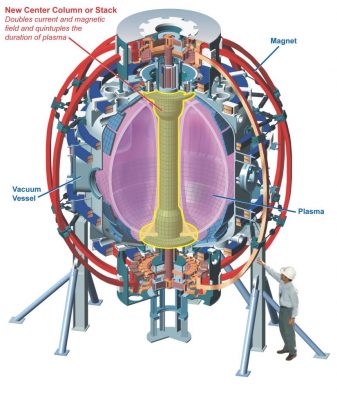
Physicist Dr Fatima Ebrahimi from the Princeton Plasma Physics Laboratory (PPPL) has carried out first computer simulations to evaluate the efficiency of a start-up mechanism known as coaxial helicity injection (CHI), of doughnut-shaped fusion machines such as tokamaks. The approach simulated by Dr Ebrahimi could also benefit devices that use superconducting magnets.
CHI would form part of a greater net of magnetic fields that generate the plasma geometry in order to better confine and drive current in the plasma. The main advantage of CHI is the fact that it does not depend on central solenoids which are a technological barrier for current driven fusion devices.
Dr Ebrahimi discovered that in her simulations that 70% of the field lines closed in the inside of the device when CHI is applied, compared with 20% or 30% without CHI, thus improving plasma containment and current drive. “That is a direct application of the research. But now we also have insight into some basic physical phenomena: what are the physics behind the process of reconnection? How do the lines actually close?”, said Dr Ebrahimi.
More information can be found here.
